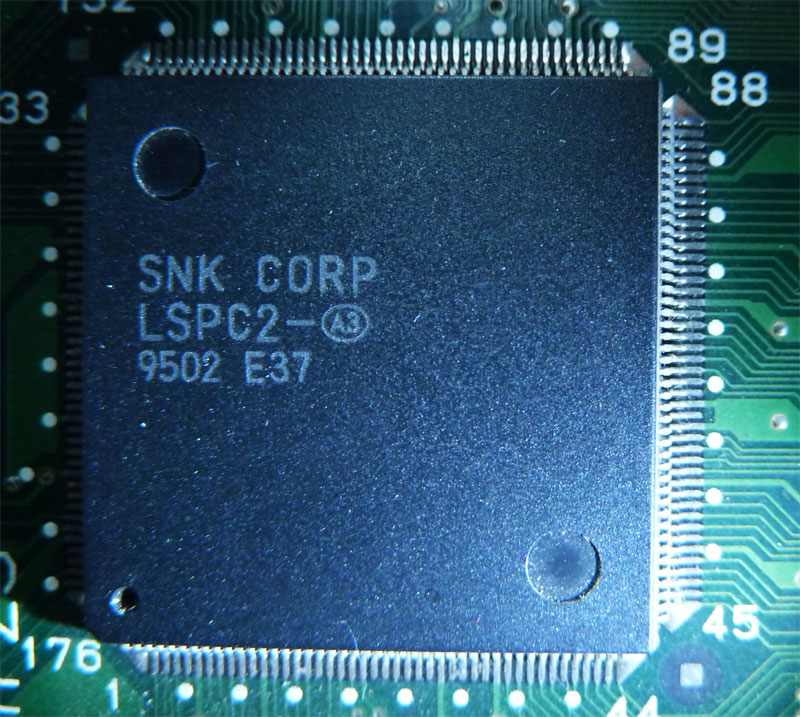MV-1FZ (MVS), MV1-ACH (MVS) and NEO-AEC (AES) which not appears on the systems MV-1C (MVS), MV-2F (MVS) and NEO-0 (AES).
(It also does not appear in emulators.)
When the alien boss zooms (or more specifically re-shrinks) into the stage there is a black area visible beneath the boss sprites which expands
according to the actual shrink level. Did anyone else have seen this issue before and if yes, what could be the reason for it?
The shrinking effect has been done with DATlib for any of the 6 boss sprites with this code:
SC234Put (0x8096, zoom_in(shrinkStep));
SC234Put (0x8097, zoom_in(shrinkStep));
SC234Put (0x8098, zoom_in(shrinkStep));
SC234Put (0x8099, zoom_in(shrinkStep));
SC234Put (0x809A, zoom_in(shrinkStep));
SC234Put (0x809B, zoom_in(shrinkStep));
Here are some pics taken from my CRT screen (the regular behavior can be seen in this video from 1:24 https://www.youtube.com/watch?v=vpLtxeDV2EQ ):





 Loading a 16*512 (or 96*512 in my case ) sprite with all tiles in transparent "pink color" (#FF00FF)
Loading a 16*512 (or 96*512 in my case ) sprite with all tiles in transparent "pink color" (#FF00FF)
 Thanks for the offer, but I wouldn't be able to know anything more having it in my hands I guess.
Thanks for the offer, but I wouldn't be able to know anything more having it in my hands I guess.